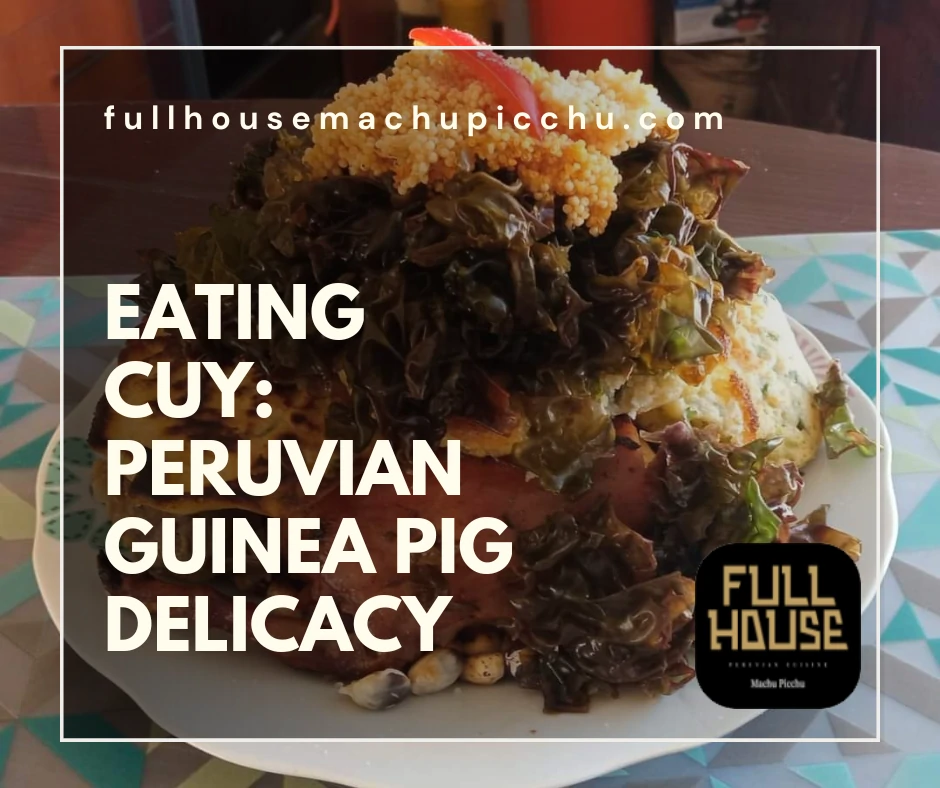Cuy Chactado is a traditional Peruvian dish with rich cultural significance. The Inca Empire prized guinea pigs for their nutritional value, and their origins date back to that time. Today, it remains a beloved delicacy in various regions of Peru.
They fry a whole guinea pigs until it’s crispy and golden brown to make this dish. Restaurants often serve cuy chactado with sides like potatoes, corn, and salad. Its unique preparation method and flavor make it a standout in Peruvian cuisine.
Cuy Chactado reflects the diversity and history of Peru’s food culture. For many, it’s a dish that symbolizes community and celebration. Whether enjoyed at family gatherings or local festivals, it brings people together.
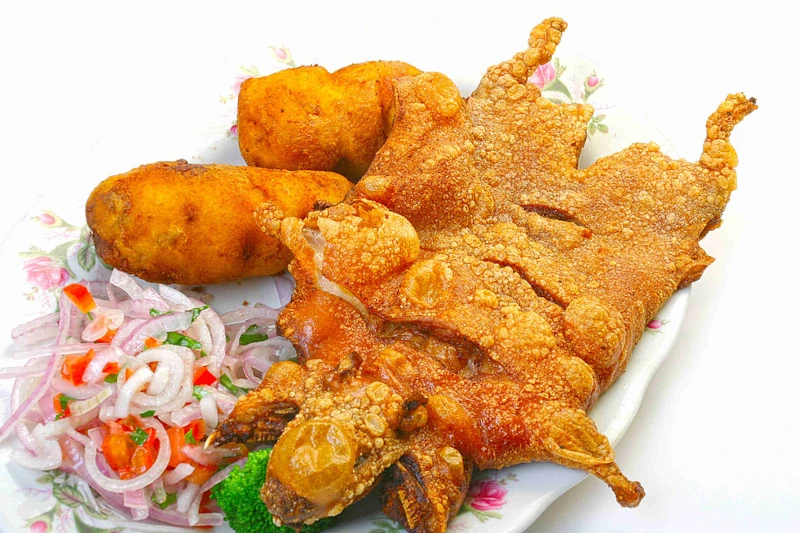
The History and Cultural Significance of Cuy Chactado
Cuy Chactado holds a special place in Peru’s rich culinary history. This traditional dish dates back to the Inca Empire, where guinea pigs were a primary source of nutrition. The Inca people valued guinea pigs not only as food but also for their cultural and ritual significance.
The practice of eating guinea pigs began long before the Spanish arrived in South America. Andean cultures domesticated guinea pigs thousands of years ago. Peruvians mainly raised these small animals for their meat, and they have been a key part of diets for generations.
In Peru, cuy chactado symbolizes more than just a meal; it represents tradition and community. People have prepared this dish for centuries during important celebrations, such as festivals and family gatherings. Preparing and sharing cuy chactado brings people together, creating a sense of unity and connection to their cultural roots.
Although the method of preparation has evolved, cuy chactado has remained a beloved part of Andean cuisine. Over time, regional variations have emerged, with different areas offering unique takes on the dish. Some prefer cuy al horno, or baked guinea pig, while others enjoy cuy al palo, roasted on a skewer over an open flame.
Cuy Chactado in Modern Peru
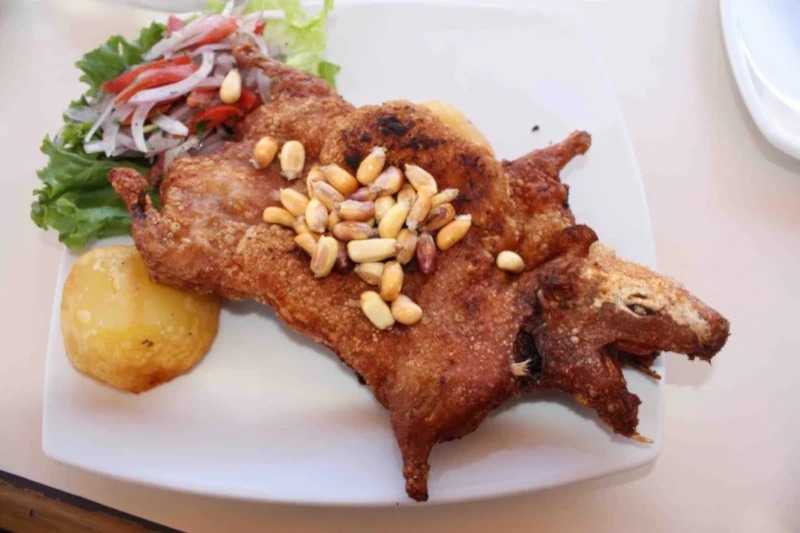
In today’s Peru, crispy cuy is still a common and important dish, particularly in the Andean highlands. Many locals continue to prepare this fried guinea pig in the same way their ancestors did. Chefs often serve it with potatoes and salad, making it a hearty and satisfying meal.
Touristic restaurants in Peru offer cuy chactado to travelers eager to try authentic local cuisine. These restaurants often emphasize traditional preparations, showcasing the full cultural significance of the dish. Although cuy chactado is popular in tourist areas, it remains deeply ingrained in everyday life for many Peruvians.
The dish has spread beyond the Andean region, gaining recognition in other parts of South America. In some areas, they serve variations like pepián de cuy—a spicy guinea pig stew—alongside fried cuy. Regardless of how they prepare it, Peru’s culinary scene undeniably features guinea pig meat.
Cuy chactado is more than just a food item; it is a reflection of Peru’s deep agricultural roots. Its preparation connects people to their land, heritage, and ancestral practices. This connection to the past is what continues to make cuy chactado a symbol of Peruvian identity.
Culinary Influence and Global Recognition
In recent years, cuy chactado has earned attention from international food enthusiasts. As global interest in guinea pig recipes grows, more chefs around the world are incorporating cuy into their menus. No one prepares cuy like the Peruvians, who have perfected methods such as deep-fried cuy and cuy chactado.
For many, the experience of tasting cuy chactado is a journey into Peru’s culinary soul. The crispy texture of the fried guinea pig paired with potatoes, corn, quinoa and a side of salad offers a unique taste of South American culture. Making and eating cuy chactado helps Peruvians connect with their heritage. It is a way to celebrate their food traditions.
How Cuy Chactado Is Prepared and Enjoyed Today
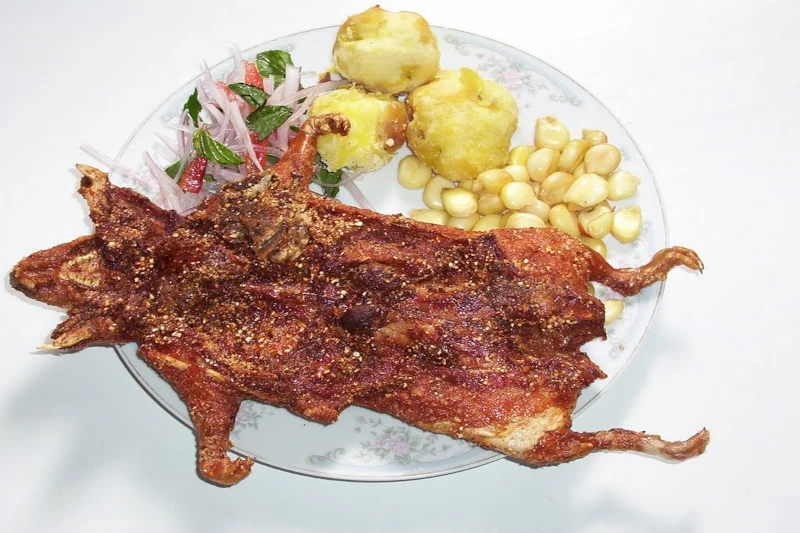
Cuy chactado is typically prepared using a whole guinea pig, also known as cuy. The preparation process begins by cleaning and seasoning the guinea pig to enhance its flavor. They then flatten it, which helps create a crispy texture when fried.
After cleaning the guinea pig, cooks marinate it to infuse the meat with traditional Peruvian spices. A common ingredient used in the marinade is black mint, which adds a distinct flavor. This seasoning gives the guinea pig its signature taste and sets it apart from other fried dishes.
The most popular way to cook cuy chactado is by deep frying it until golden and crispy. The cook places the guinea pig in hot oil and fries it until the skin is crisp and the meat is tender. This process ensures that each bite is crunchy on the outside and juicy on the inside, creating the perfect balance of textures.
After frying, restaurants typically serve cuy chactado with traditional Peruvian sides like Native potatoes and salad. Chefs often fry or boil the potatoes and pair them with fresh herbs and greens. The combination of crispy cuy, warm potatoes, and fresh salad makes for a satisfying and well-rounded meal.
Variations and Regional Differences
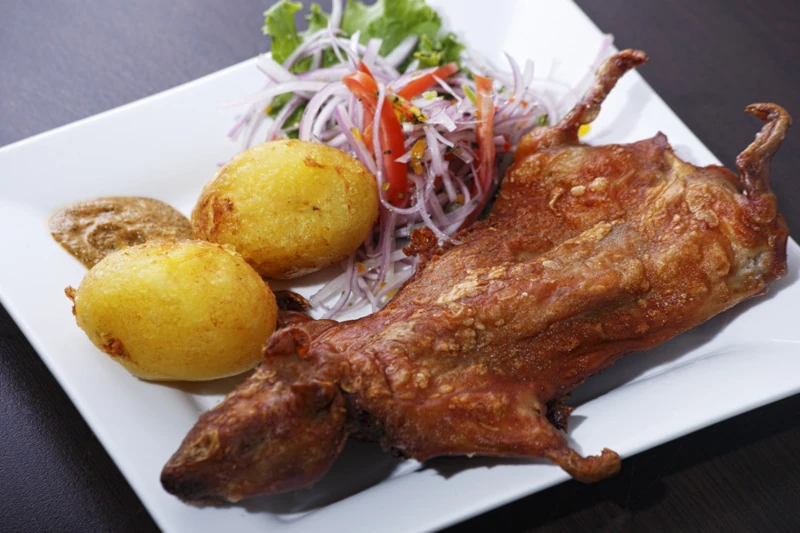
The basic way to prepare guinea pig is mostly the same. However, there are regional differences in how people enjoy it. Making and eating cuy chactado helps Peruvians connect with their heritage. It is a way to celebrate their food traditions.
In some areas of Peru, they cook the guinea pig using a variation of the dish called cuy al horno, or baked guinea pig. This method results in a slightly different flavor profile, as the meat becomes more tender and infused with spices.
Other regions in Peru may prepare cuy in a more rustic manner, cooking it over an open flame. They skewer and roast the guinea pig slowly using this technique, known as cuy al palo. The smoky flavor adds more depth to the dish and people often serve it at festivals or community celebrations.
Some restaurants also serve variations, such as Chiriuchu and pepián de cuy, a rich guinea pig stew seasoned with a blend of spices. This dish differs from guinea pig in that it is more of a hearty, flavorful broth. Regardless of the preparation method, the guinea pig remains the focal point of the dish.
People in Peru often enjoy cuy chactado as a meal for sharing. Family and friends come together to eat this dish. Restaurants often serve a whole guinea pig to a group, with everyone tearing off pieces of the crispy skin and tender meat. This shared experience makes eating guinea pig a bonding activity that is deeply ingrained in Peruvian culture.
Cuy Chactado Today: A Staple for Locals and Tourists
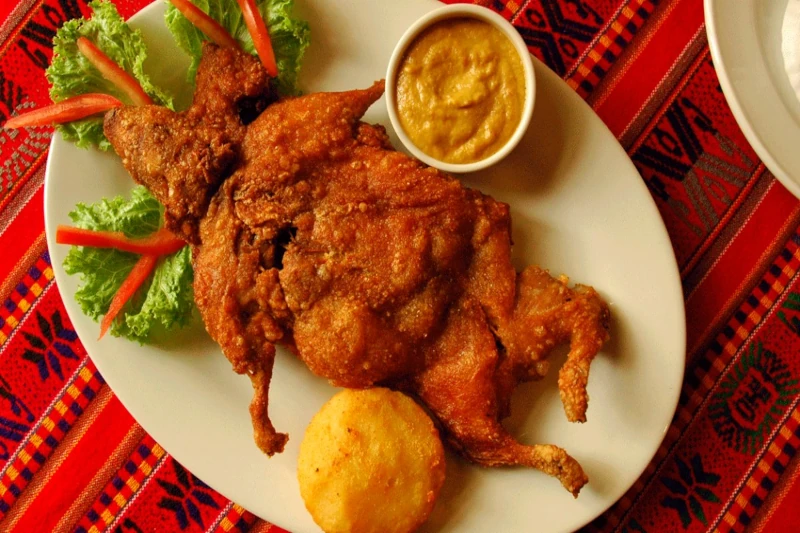
In today’s Peru, cuy chactado is enjoyed by both locals and tourists alike. Many Peruvian restaurants, particularly those in the Andean regions, offer cuy chactado as part of their menu. For tourists, trying this traditional dish is a must when visiting Peru to experience local culture.
Despite its popularity with travelers, cuy remains an important dish for the locals. People often serve it during special occasions, such as family gatherings or public holidays. Preparing and eating guinea pig helps Peruvians connect with their heritage and celebrate their food traditions.
For those who have never tasted guinea pig, guinea pig offers a unique opportunity to explore Peruvian gastronomy. The dish is rich in flavor and offers a different taste experience compared to more commonly known meats. Whether you try it at a tourist restaurant or a local gathering, cuy chactado will leave a lasting impression.


